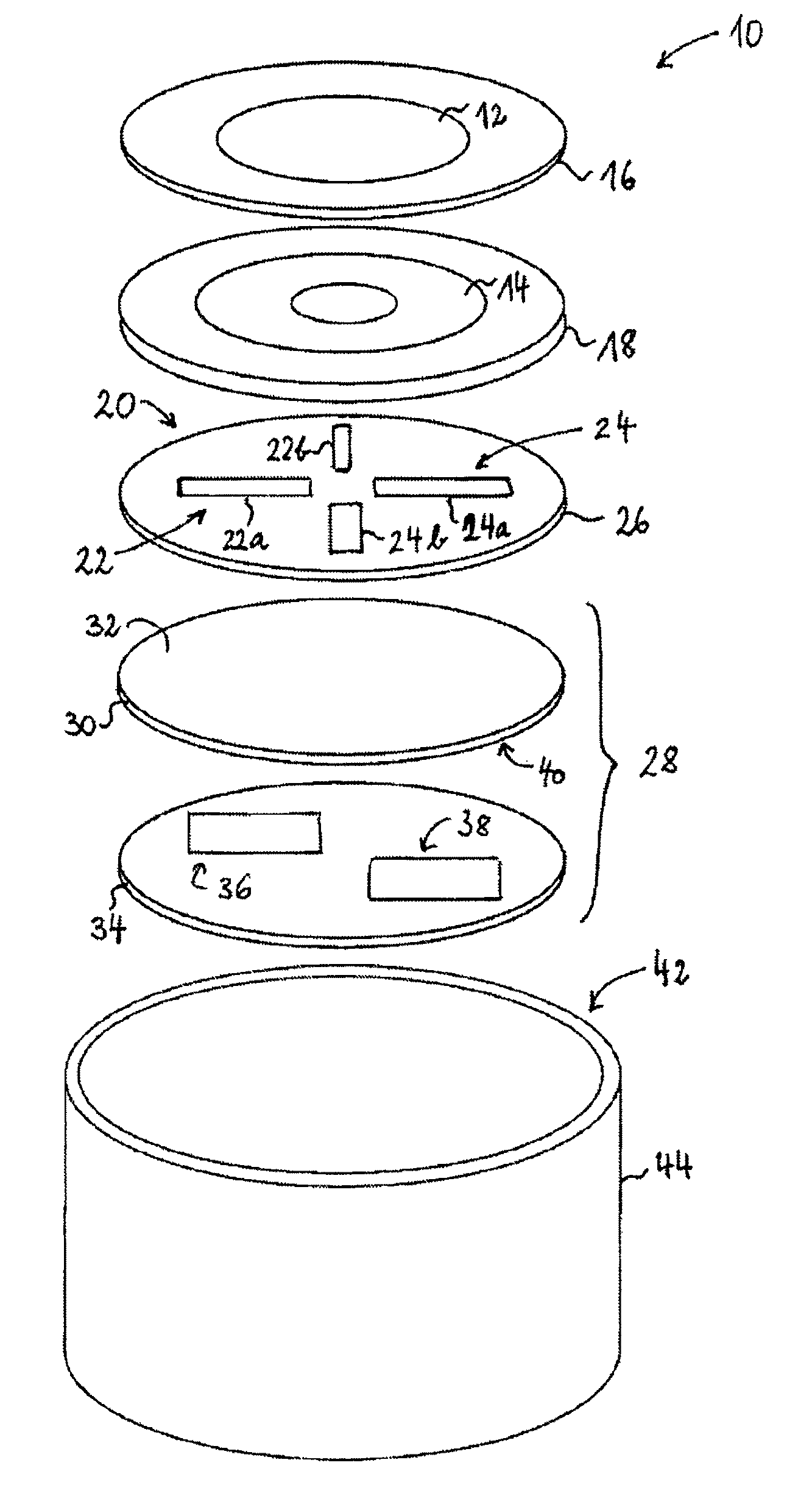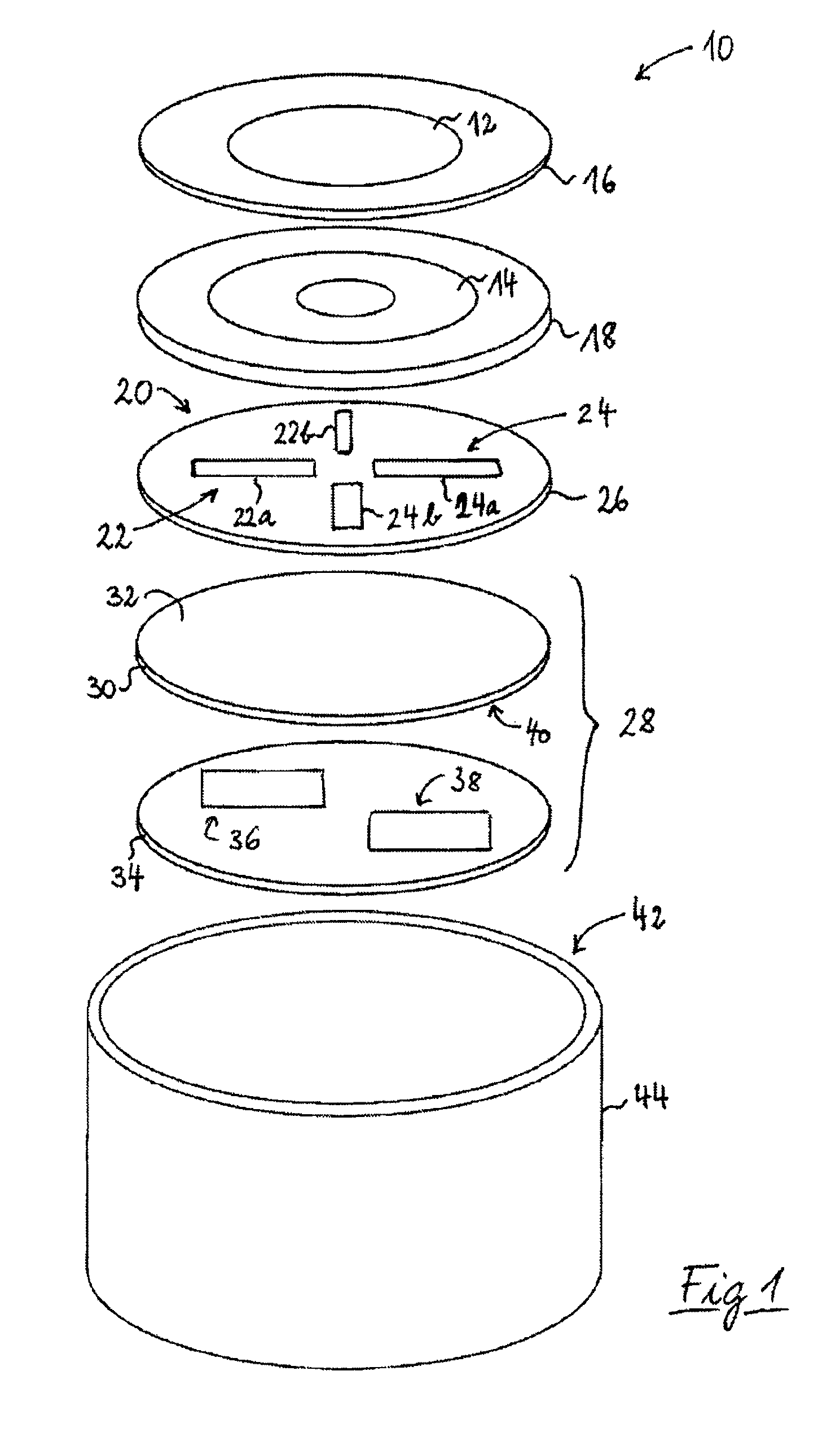Multi-band antenna for satellite positioning system
a satellite positioning system and antenna technology, applied in the direction of antennas, antenna supports/mountings, radiating element structural forms, etc., can solve the problems of limiting the determination of position, multipath effects and phase-centre stability, and the difficulty of the receiver to mitigate the effect of multipath, so as to achieve less costly electric circuits, stable and compact
- Summary
- Abstract
- Description
- Claims
- Application Information
AI Technical Summary
Benefits of technology
Problems solved by technology
Method used
Image
Examples
Embodiment Construction
[0032]An schematic view of a preferred embodiment of a stacked multi-band patch antenna 10 is shown in FIG. 1. The antenna comprises a stack of conductive patches 12, 14 applied each on a disk-shaped dielectric substrate 16, 18. Underneath the stacked patches an excitation line section 20 comprises two pairs 22, 24 of conductive strips 22a, 22b, 24a, 24b on a dielectric substrate 26. The conductive strips 22a, 22b, 24a, 24b are connected with an RF front end arranged in a triplate 28 under the excitation line section 20. The conductive patches 12, 14, the excitation line section 20 and the triplate 28 are arranged in substantially parallel relationship.
[0033]The conductive patches 12, 14 and the conductive strips 22a, 22b, 24a, 24b of the excitation section 20 are manufactured as printed copper layers, which can be plated with a tin-lead alloy. Alternatively, an alloy without lead can be used.
[0034]The top conductive patch 12 is a disk-shaped copper patch on a first dielectric disk ...
PUM
 Login to View More
Login to View More Abstract
Description
Claims
Application Information
 Login to View More
Login to View More - R&D
- Intellectual Property
- Life Sciences
- Materials
- Tech Scout
- Unparalleled Data Quality
- Higher Quality Content
- 60% Fewer Hallucinations
Browse by: Latest US Patents, China's latest patents, Technical Efficacy Thesaurus, Application Domain, Technology Topic, Popular Technical Reports.
© 2025 PatSnap. All rights reserved.Legal|Privacy policy|Modern Slavery Act Transparency Statement|Sitemap|About US| Contact US: help@patsnap.com



